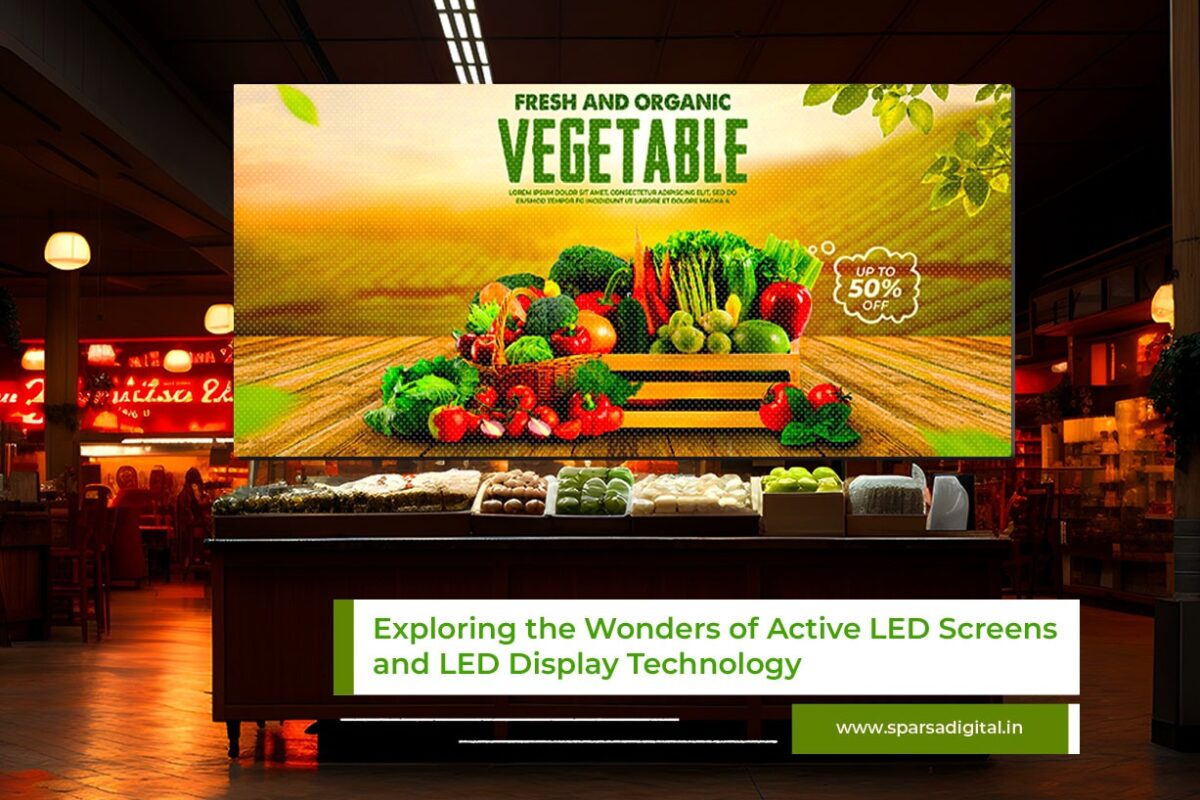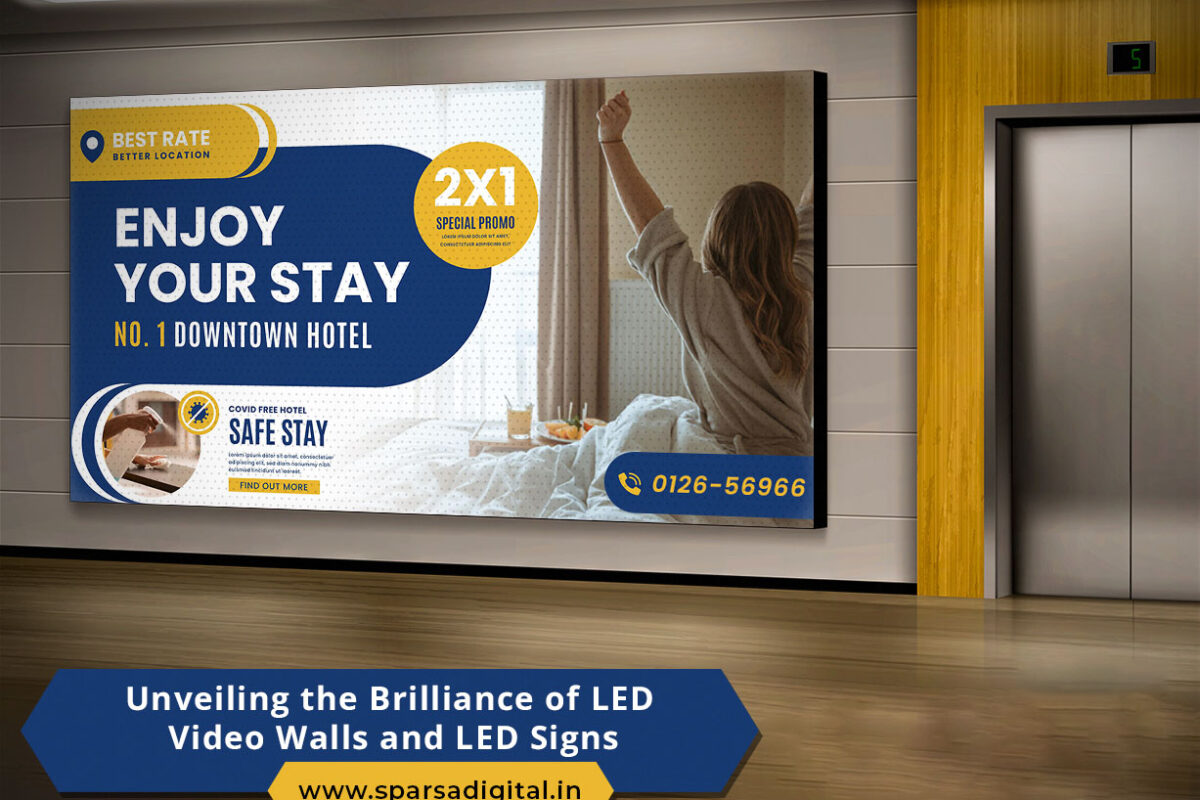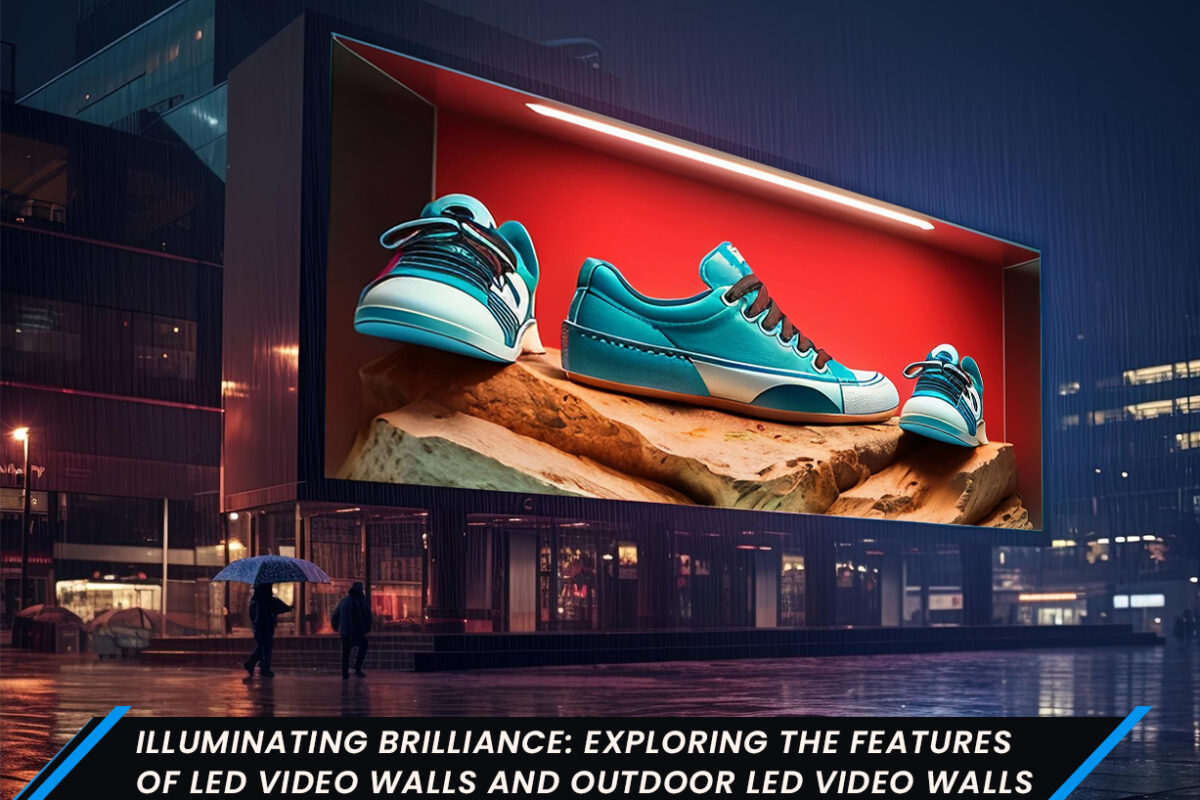In the realm of visual communication, technology has played a pivotal role in transforming static displays into dynamic, vibrant experiences. LED display screens have emerged as trailblazers in this evolution, providing businesses, events, and public spaces with an unparalleled means of engaging their audience. In this blog post, we will delve into the fascinating world of active LED screens and LED display technology, exploring their applications, benefits, and the innovative ways in which they are reshaping visual communication.
Understanding Active LED Screens
Active LED display represent a cutting-edge advancement in display technology. Unlike traditional displays, which rely on passive technology, active LED screens incorporate light-emitting diodes (LEDs) that emit light when an electric current is applied. These screens are often characterized by their high brightness, vibrant colors, and the ability to display dynamic content with exceptional clarity.
Key Features of Active LED Screens:
Brightness and Visibility: Active LED screens are renowned for their high brightness levels, making them visible even in well-lit environments. This feature is particularly beneficial for outdoor advertising, storefront displays, and large-scale events.
Energy Efficiency: LED technology is inherently energy-efficient, consuming less power compared to traditional display technologies. This not only reduces operational costs but also aligns with sustainable practices, making LED screens an environmentally friendly choice.
Flexible Design and Customization: LED screens are available in various sizes and can be customized to fit specific spaces and requirements. This flexibility allows for creative and innovative display setups, making them ideal for diverse applications.
Durability and Longevity: LED screens are known for their robust construction and longevity. The absence of fragile components, such as filaments or glass tubes, contributes to their durability, making them suitable for both indoor and outdoor use.
LED Display Screen Technology
1. Pixel Pitch and Resolution:
Pixel pitch refers to the distance between individual pixels on an LED display screen. A smaller pixel pitch results in higher resolution and sharper image quality. This is crucial for applications where detailed visuals are essential, such as product showcases or video presentations.
2. Refresh Rate:
The refresh rate determines how frequently the image on the screen is redrawn per second. A higher refresh rate results in smoother motion, making LED screens suitable for applications like video playback and dynamic content.
3. Color Reproduction:
LED display screens offer impressive color reproduction capabilities. The technology allows for a wide color gamut, ensuring vibrant and accurate representation of images and videos.
4. Modularity and Scalability:
LED screens are often modular, allowing for easy customization and scalability. This modular design enables users to create displays of various sizes and configurations, making them suitable for both small-scale installations and large-scale productions.
Benefits of LED Display Screen Technology
Dynamic Content Delivery: LED display screens enable the seamless delivery of dynamic content, capturing attention and conveying messages effectively. This is especially advantageous in environments where information needs to be updated frequently.
Versatility in Design: The flexibility and customization options of LED display screens allow for versatile design possibilities. Businesses can create unique and eye-catching displays that align with their brand identity and communication goals.
Energy Efficiency: LED technology is inherently energy-efficient, consuming less power compared to traditional display technologies. This not only reduces operational costs but also contributes to sustainability efforts.
Longevity and Reliability: LED display screens are known for their durability and longevity. With no fragile components like filaments or glass tubes, these screens can withstand the rigors of continuous operation, making them a reliable choice for various applications.
High Visibility in Various Environments: The high brightness levels of LED screens ensure visibility in various environments, including well-lit outdoor spaces. This makes them suitable for applications such as outdoor advertising, sports stadiums, and storefront displays.
Best Practices for Implementing LED Display Screens
Define Clear Objectives: Clearly outline your communication goals and objectives before implementing LED display screens. Understanding the purpose of the display will guide content creation and overall strategy.
Consider Environment and Placement: Assess the environmental conditions and placement of LED screens. Factors such as ambient lighting, viewing distances, and potential obstructions should be considered to optimize visibility and impact.
Content Strategy and Design: Develop a content strategy that aligns with your brand identity and communication goals. Ensure that visuals are designed with the display’s specifications in mind, considering factors like resolution and color reproduction.
Regular Maintenance and Updates: Implement a regular maintenance schedule to ensure that LED screens are functioning optimally. Keep content updated to prevent stagnation and to align with changing communication needs.
User Training and Support: Provide training to content creators and administrators to ensure proficiency in managing and updating content on LED display screens. This includes understanding the features and capabilities of the display technology.
Conclusion
Active LED screens and LED display technology have redefined the landscape of visual communication, offering businesses and organizations unprecedented opportunities to engage, inform, and captivate their audience. From vibrant outdoor advertising to immersive entertainment experiences, the applications of LED display screens are diverse and continually evolving. The technological advancements, versatility in design, and energy-efficient nature of LED screens make them a preferred choice for a wide range of industries.





